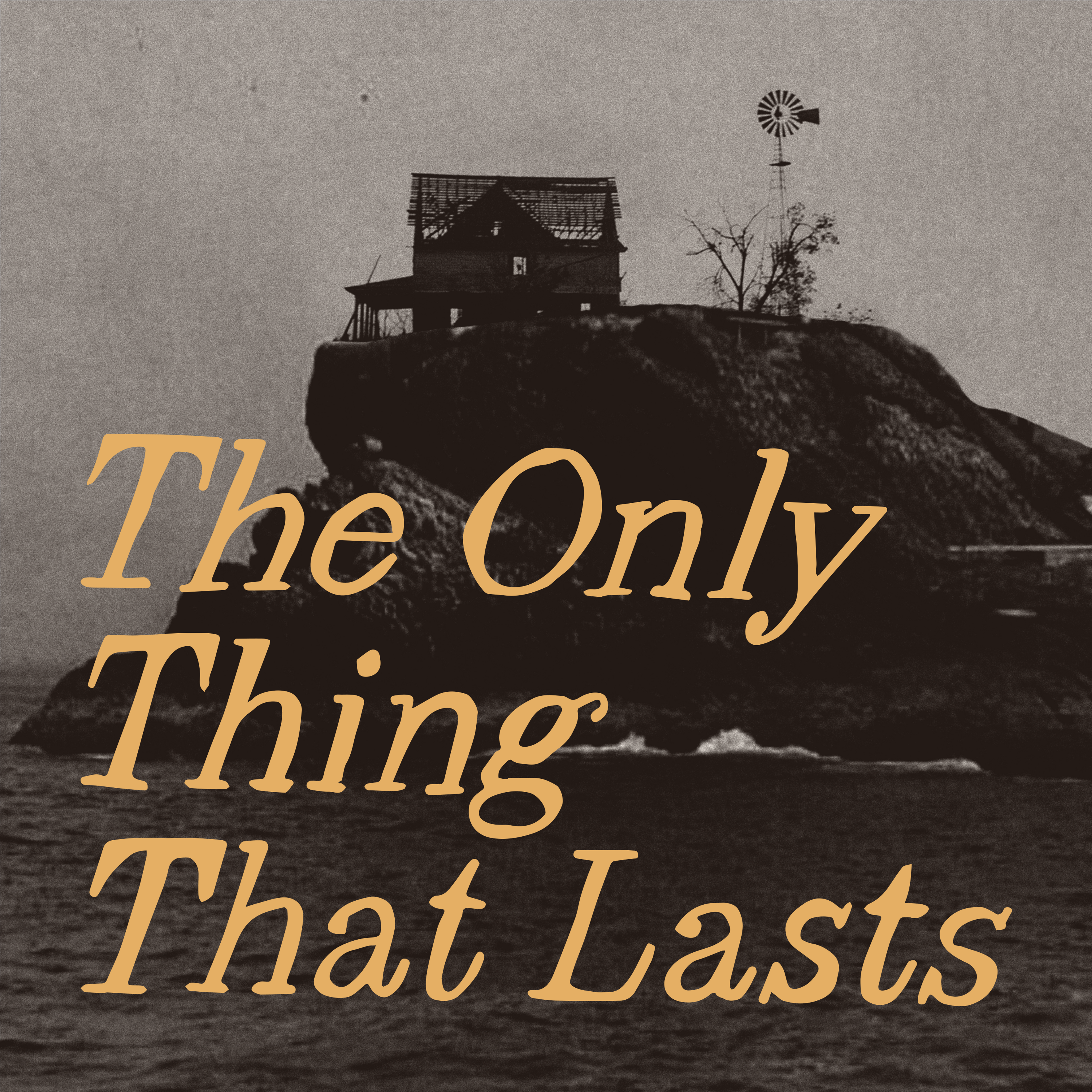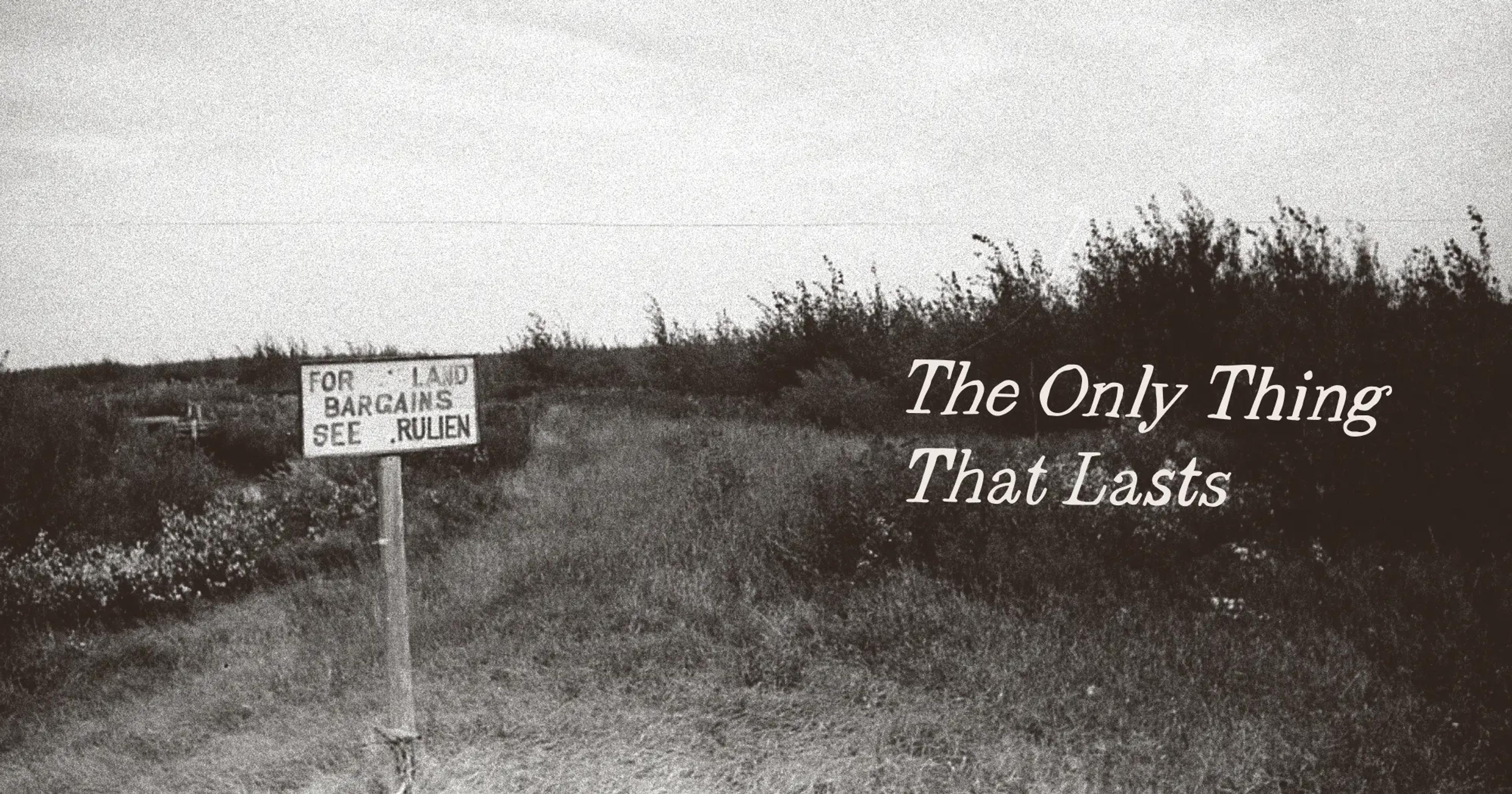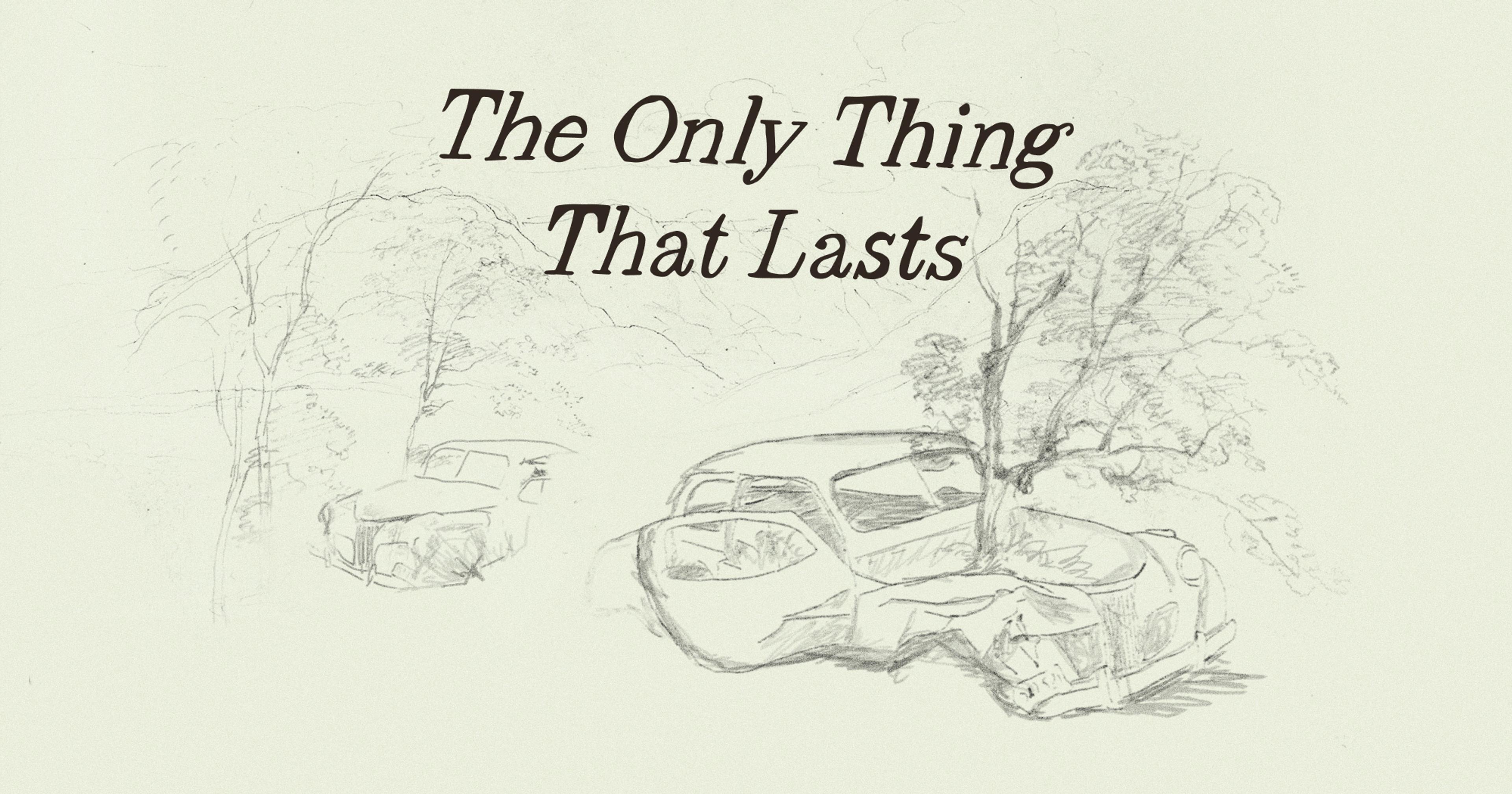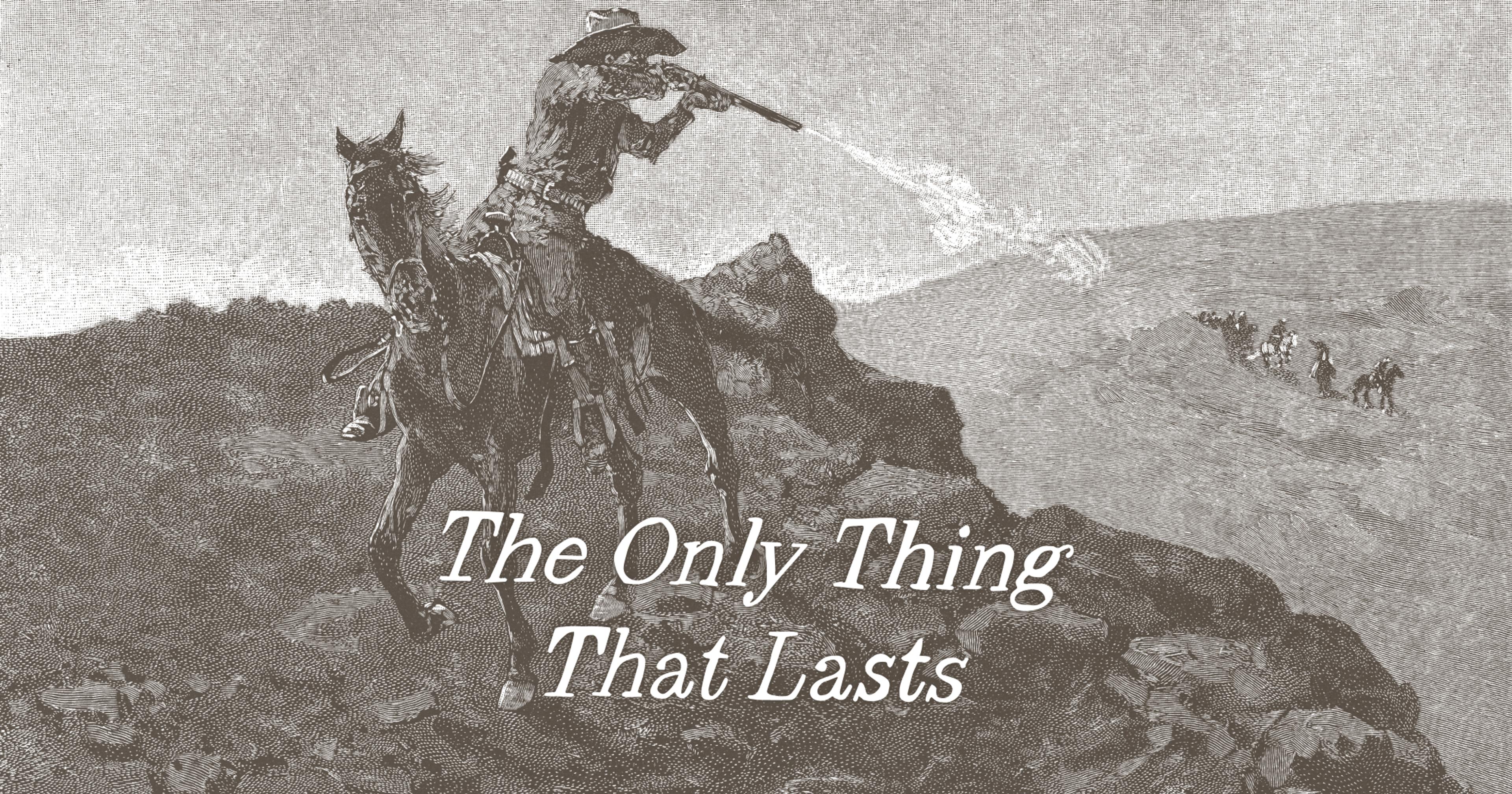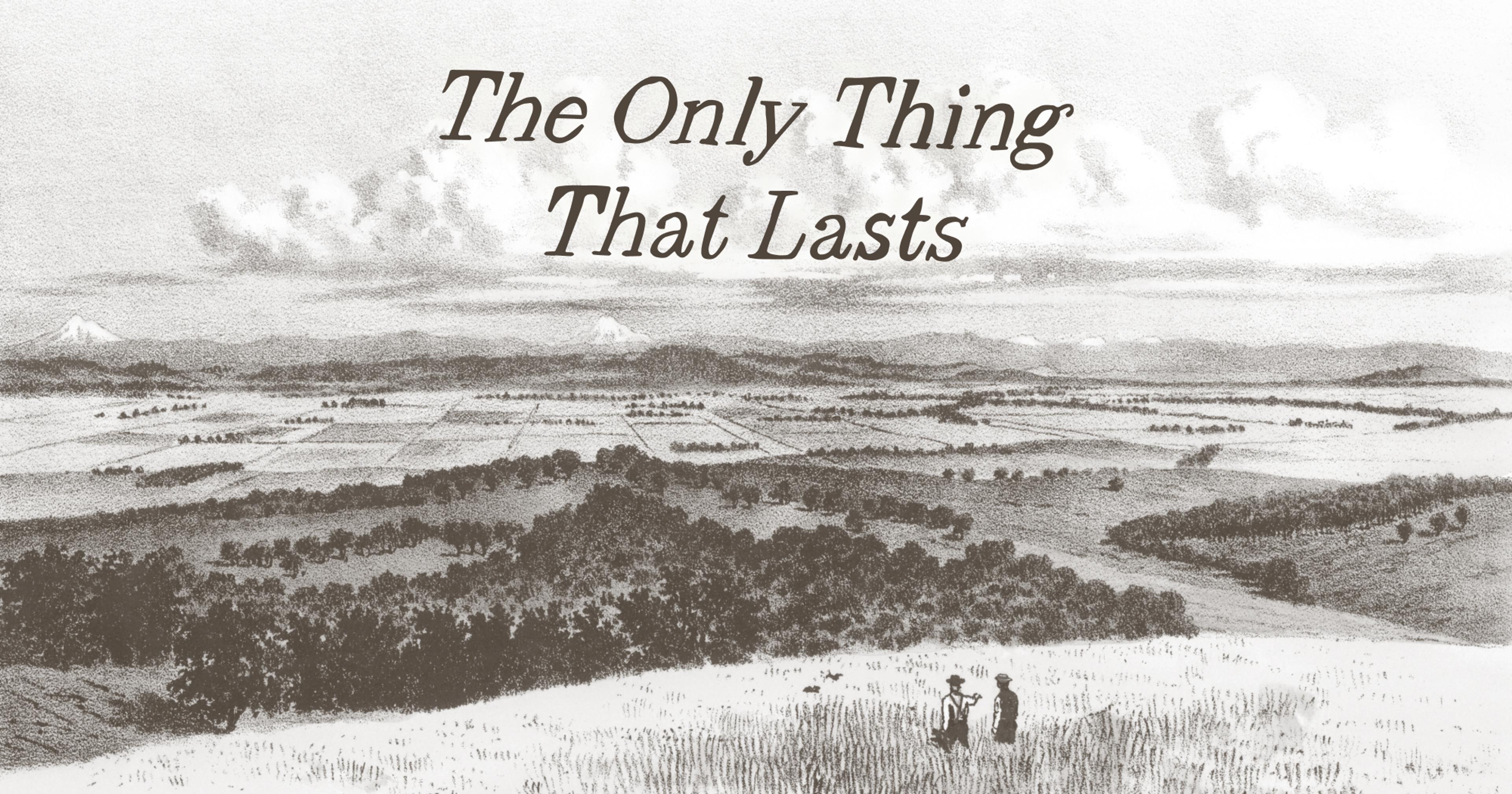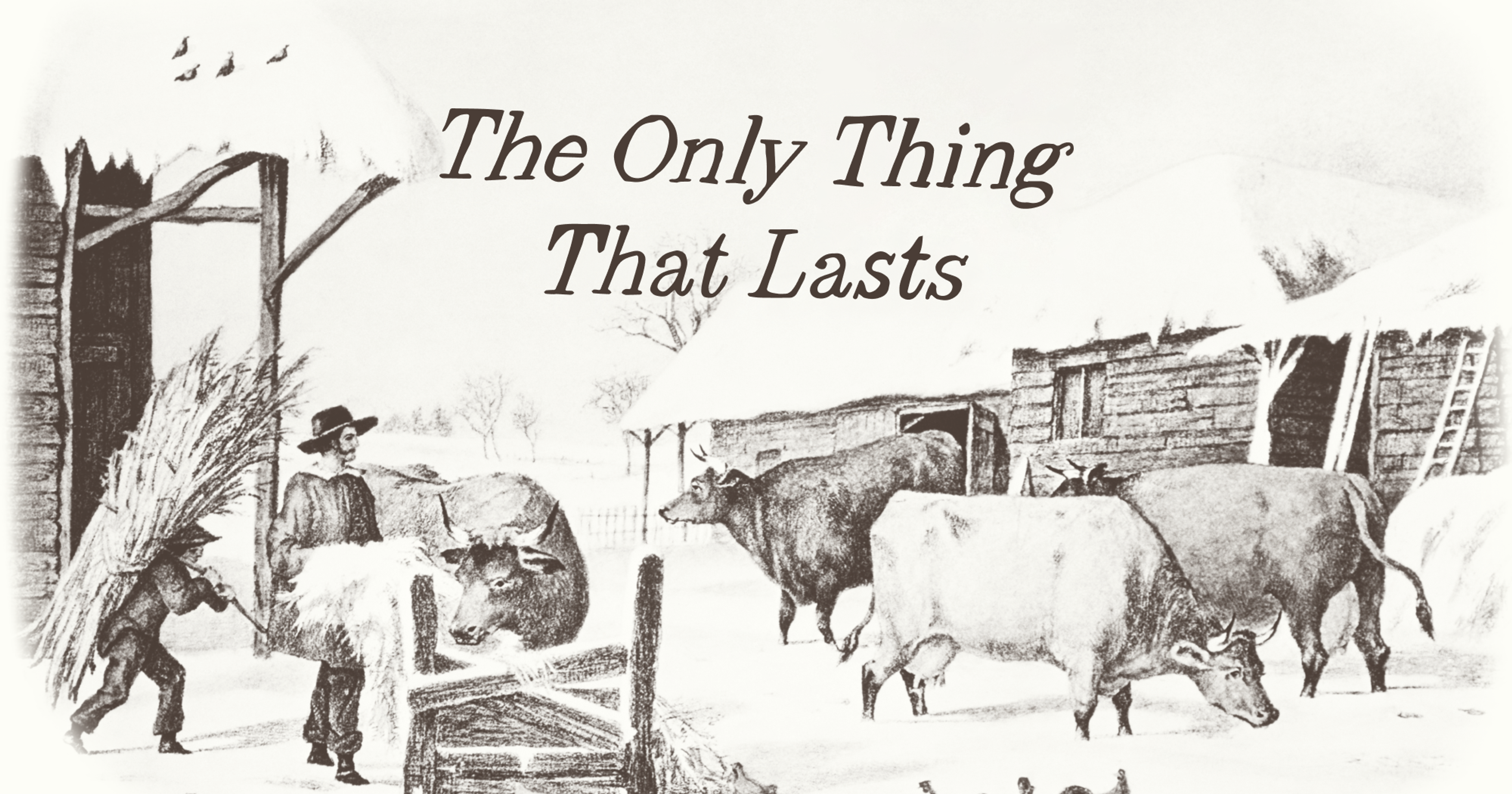Conservation is in the eye of the beholder.
Subscribe on your favorite podcast app: Spotify, Apple Podcasts, Overcast, Pocket Casts, Amazon, or via our RSS feed: (https://feeds.megaphone.fm/onlythingthatlasts).
INTRODUCTION - The Environmental Trolley Problem / Conserving Land, But for Whom?
SM: You’ve probably heard one of the many versions of the Trolley Problem. My favorite goes like this: There is an uncontrolled trolley barreling down the tracks. Five people are in its path. You have the ability to flip a switch and divert the trolley onto an adjacent track where it will hit only one person. So do you flip the switch, or do you do nothing?
If you feel like there’s a straightforward answer to this question– you might want to share your logic with the environmental movement, because a question with very similar contours has been plaguing them for the better part of a century. The environmentalist version, of course, doesn’t involve an actual trolley, but it hinges on a similar set of questions– about the pre-existing nature of things, when, or whether, we have a responsibility to act, and if we do, whether our aim should be to minimize harm or to allow “nature to take its course” without interference.
Differing opinions here have led to one of the most enduring schisms in the environmental movement, the one between conservationists who believe that land, forests, soil, and water should be protected through careful management, and preservationists, who believe that America’s pristine wildernesses should never be managed, or even touched, by humans at all– and should be left forever wild. So whether to protect land for use or from it– this is environmentalism’s hypothetical trolley switch. And this ideological divergence is at the heart of many of the most heated disputes between environmentalists and farmers.
[MUSICAL INTERLUDE]
In the first part of this episode, which you’ll find earlier in our feed, we took a closer look at how American farmland has been fundamentally transformed by and for agriculture, and the lasting impacts those actions have on farmers, communities, and ecosystems.
Today, in Part Two, we’re taking a look at our still-evolving ideas about the opposite– conservation, preservation, and even regeneration. We’ll be complicating the idea that “farmers are the original environmentalists,” and that environmental protection is an unmitigated good.
We’ll also look ahead to the role farmland may be able to play in sequestering carbon and averting climate disaster in the future.
This is The Only Thing That Lasts. I’m Sarah Mock.
[MUSICAL INTERLUDE]
At the beginning of Part I, I spoke with the environmental historian Paul Sutter, about Providence Canyon, a state park in Georgia that’s home to Grand Canyon-like cliffs, which were caused, in part at least, by overzealous farming on fragile and misunderstood land in the 19th century. As you’ll recall– Providence Canyon is a gigantic erosion gully, the result of countless gallons of water falling onto unstable soil, and then carrying the dirt away downstream, gouging out cavities in the land hundreds of feet deep. The impact that these gullies had on farmland, farmers, and their communities were severe, and in the end tens of thousands of acres of deeply gullied land had to be abandoned.
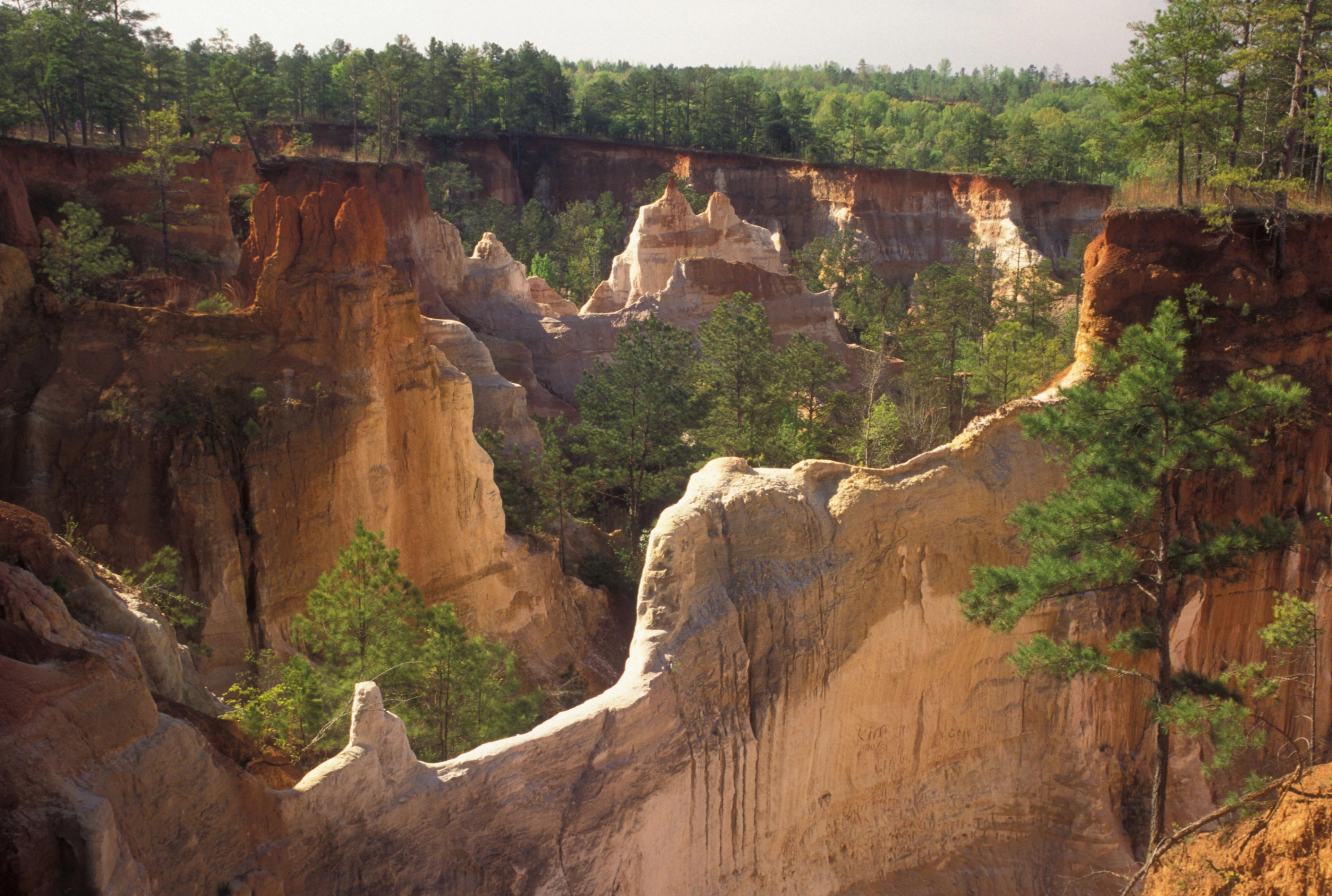
Providence Canyon
But I’m going to bring Paul back now, because there is an epilogue to the Providence Canyon story that we haven’t talked about yet, one which takes place in the 1960s, decades after the canyon was formed, and provides a very real example of the land stewardship trolley problem.
But this afterward doesn’t start amongst the farmland and gullies of the Georgia Piedmont, it begins downstream, in a wild, riverine area East of Atlanta–
Paul Sutter: This place called the Alcovy River Swamps that were seen as swamplands, wetlands in the new parlance, in need of protection. And the Soil Conservation Service, ironically, it’s the Soil Conservation Service, wanted to go into the Alcove River and straighten it out and drain it and have more of the land open to agriculture.
SM: This proposed project marked the beginning of a fierce debate about the destiny of the Alcovy Swamps. To drain or to preserve, that was the question.
This issue arose around the same time that Rachel Carson’s book Silent Spring was published, in which she warned, for one, that if the widespread and indiscriminate use of pesticides like DDT continued, the indirect effect on bird populations would be devastating. Hence the book’s ominous title–future Springs without songbirds. Silent Spring sparked a national environmental awakening, one that raised the stakes of draining the Alcovy swamps from what was previously a simple land improvement project into a full blown controversy.
On the one side of the issue were these newly empowered preservationists, who were anxious to protect the Alcovy wetlands in all their natural, soggy glory, and so protect the ecosystem and habitats that the swamp represents for wildlife. On the other side were those who identified as conservationists, people who supported channelizing the river and removing the swamp, in particular to make it more amenable to landowners and farmers.
It’s worth reckoning with the fact that these swamp-drainers weren’t necessarily money-hungry capitalists or careless polluters– on the contrary, they also thought of themselves as environmentalists. But from their perspective, using and managing land is an element of environmental protection. This is a core disagreement between preservationists and conservationists, even today– what one group calls preservation the other calls abandonment. What one group calls management the other calls extraction and abuse.
Depending on which of these two groups makes you feel more at home, maybe the right thing to do here– the solution to this trolley problem, seems straightforward to you. Either believe that the needs of humans and wildlife can both be advanced through active human interference and management, or you believe, as many researchers and activists did at the time, that these swamps represent pristine wilderness, have inherent environmental value, and therefore must be preserved undisturbed.
But let me complicate the story a little further. What if I told you that these swamps were not as “natural” as they first appeared.
Paul Sutter: Almost certainly there were swamps there in the mid-20th Century because all that soil that had been washed off the Piedmont had to go somewhere, and it went down into the bottoms of these river valleys and created swampy conditions.
SM: That’s right. The Alcovy swamps were not naturally occurring. They were formed by the same massive agricultural erosion that created the likes of Providence Canyon. Now does the answer seem so obvious? In other words, is the right thing to do to preserve the swamps as they are now, because over the years they’ve become home to wildlife, provided recreational value, and are now lending valuable ecosystem services? Or is the right thing actually to drain the swamps and restore the pre-man made-erosion ecosystem?
The end of this story is already written– and the final result was a mixed bag. Part of the swamp complex, called Cornish Creek, was channelized, and other parts were protected as part of the Alcovy conservation area. But for Paul, exploring these exact kinds of dilemmas has been one of the big, and relatively recent, leaps forward in the study of environmental history.
Paul Sutter: Environmental historians go into places that appear to be pristine and natural and show us all of the ways in which those places were materially and culturally constructed. Wilderness areas, national parks, and a lot of the effort of environmental historians was to show us that these places had all kinds of histories that we had to recognize. And that in some ways the acts of preserving these landscapes erased. Those histories, not the least of them being Indigenous histories. So a lot of the work environmental historians were doing was troubling these ideas of pure nature.
[MUSICAL INTERLUDE]
SM: It seems to me that having access to all the information about the true nature of a place– including its full history– human and otherwise– is critical to ethically deciding whether to flip the hypothetical trolley switch, or to do nothing. And one of the most important lessons of both Providence Canyon and the Alcovy Swamps is that separating human influence from “pure nature” is often nearly impossible.
But then what does that mean from preservationists, whose goal is to protect wildspaces by preserving their original states? What if we don’t know the original state of a place? Or what if that original state has been altered fundamentally by human action? How far back in history must we look to find that true original state? How do we know when to stop looking back?
I’ve asked myself a lot of questions like this while working on this story, and I’ve landed on few satisfying answers. The good news, then, is that I’m not the one answering most of these questions– after all, I make podcasts, not environmental policy.
To me though, that’s the most fascinating thing about this environmental trolley problem.
That, unlike the original thought experiment, questions of environmental policy are not hypothetical– they get decided all the time, by local officials and legislatures, by courts and federal agencies. Maybe then the better question for us to ask– rather than whether we should flip the switch or not– is whose hand is actually on the switch? What is it they’re trying to either conserve or preserve, and who are they saving it for?
That question has been a central one for Levi Van Sant, a researcher at George Mason University, who’s focused, among other things, on the intersection of conservation and farmland consolidation.
By happenstance, he grew up in central Georgia, within an hour of Providence Canyon, and spent years working on farms after college. He dreamed for a while about starting his own farm, but found that it was nearly impossible to go from being a farm laborer to a farm owner– especially without significant startup capital. As he learned how common a challenge this is, he returned to university, eager to study the cause of land access issues informed by his own direct experiences.
Levi Van Sant: The long and short of it is if you want to be in the local, sustainable, organic market, then you oftentimes need to be relatively close to a city because that’s where most of your market is a lot of the times. And that means the land cost is significant, so that’s one of the things that was motivating my research.
SM: For most anyone in agriculture, the fact that many young and beginning farmers find it nearly impossible to buy, and sometimes even rent, farmland is well-known. The farmland access challenge is complex, but one of the key contributors is another common issue– farmland consolidation. Consolidation in agriculture was most famously pushed by Richard Nixon’s Secretary of Agriculture, Earl Butz, who proclaimed that farmers should “get big or get out,” and since then farmland consolidation has continued steadily,leading to fewer and fewer people holding a larger and larger share of total U.S. farmland.
It’s easy to point to mega-buyers like Bill Gates as prime culprits, but according to Levi’s research, the problem is more insidious than that, leading to radical inequalities on a much more local level. For example, in some of the Virginia counties that Levi studies, the top 1% of landowners own between 25 and 45% of all land in the county, while the vast majority of other rural residents own tiny tracts or, more likely, renting.
But what do questions of farmland access and consolidation have to do with the people that make decisions about conservation or preservation? It’s a question of following the money. Throughout the U.S., money and environmental policy converge in one particular place– a conservation tool known as a conservation easement.
A conservation easement is a voluntary legal agreement usually between a landowner and a non-profit or a land trust. Under a conservation easement, the private landowner agrees to forego some property rights, to receive a tax or other benefit. And the non-profit is responsible for making sure the landowner sticks to the agreement. Communities, states, and even the federal government justify this tax discount, ostensibly because conserving open space provides a public good– and so owners pay fewer taxes in exchange for this public benefit.
There are many different kinds of conservation easements– ones for historical preservation, ecological benefits, and even ones that support the continuity of production agriculture. These last two types have become especially popular in areas with strong development pressure, like directly around cities. That matters because that land is also highly desirable for young and beginning farmers.
And that’s the thing, because depending on which type of easement is instituted, conservation easements can be a way that farmland, or potential farmland, gets tied up and removed from the market, limiting supply and therefore access.
Levi Van Sant: I got interested in the tendency for conservation easements to be used by large landowners, to maintain their large land holdings as a tax write-off. And there are lots of examples of how this works.
SM: The mechanism here is pretty simple, but packs a big financial punch. See, property taxes can be a key barrier to maintaining large landholdings. For free market heads out there– this is a good thing. If landowners aren’t making enough money on their land to afford the taxes on it, then they’ll be motivated to sell. And farmland should become more available, which might even eventually push the price down. But– conservation easements, whether they allow ag production or not, release current landowners from this bind by cutting their tax bill.
An easement can be created for any number of acres, and are generally negotiated privately, each one custom tailored to the landowner’s desires. This means that a landowner can create an easement that maximizes their benefit, helps them hold on to as many acres as possible, and maybe even set them up, financially, for expansion.
Levi Van Sant: Basically, the more money that you have, the bigger of a benefit you get from getting a conservation easement. In terms of tax benefits, they are regressive. By design, not to mention the fact that you have to be a landowner to even get one, right? So immediately you’re taking out a huge portion of the population that has least access to land.
SM: In the case of conservation easements, this is the end of the money trail, and the answer to our question about who decides environmental policy on farmland, and for whose benefit. It’s the wealthiest landowners who are in the driver’s seat when it comes to conservation easements, the same group who already have the most access to farmland, and who derive the most direct benefit from the land itself- whether by working it or enjoying it.
The impact on local communities around conservation easements goes beyond the financial.
There are good questions to be asked about what benefit an “open space” provides when nearby residents aren’t allowed to access it because it’s private land. It’s nice to see woods and fields from the road I guess, and there is some amount of clean air and water benefit that might not otherwise be present, but the terrible paradox that many landless rural communities live in is to be surrounded by farm- and wildlands that they’re forbidden to physically enjoy, even though they help pay for them through tax credits.
The fact the easements first and foremost deliver benefit to landowners is essential to their voluntary function– but it also makes them an imperfect tool if the goal is to protect ecosystems and open space, ostensibly for the benefit of the public. And questions about the public benefit of conservation easements are increasingly being raised.
Levi Van Sant: Republican lawmakers in South Carolina were the ones who challenged the sort of conventions around conservation easements and said, ‘Hey, if we’re funding conservation, my constituents want to be able to deer hunt there. Right? If we’re funding the protection of lands, why can’t we provide public access?’
SM: There is a lot of interesting work being done to make conservation easements more beneficial to the public. Because conservation easements tend to be highly customizable to a landowners needs, it may be possible, given the right landowner and situation, to make them less regressive, more accessible to the local community, and a better tool for achieving conservation goals. Though this is not a comprehensive solution, it could be a step in the right direction.
But Levi is thinking even more expansively about how policies and tools that go beyond easements might help not only preserve wildlands, but also relieve the farmland access issue as well.
Levi Van Sant: We do have federal public land for ranching and forestry, right? We have BLM land. We have national forest land. We don’t have any federal public land for farming. That’s a strange thing to me. That is a different path to preserving agriculture than conservation easements, that would provide a lot of access to farmland for a lot of people. It’s possible anyway that this could be done. There’s no reason why we couldn’t have public farmland.
SM: While publicly owned farmland might not be in the cards in the near future, it’s promising to see creative solutions being imagined that might allow more young and beginning farmers access to farmland, and that might help all Americans gain access to more spaces, agricultural or wild, that are protected in their name, for their benefit, and most importantly, with their tax dollars.
And when it comes to the question of who benefits from conservation or preservation, how it is done, and who, in the end, gets to decide, the idea of public ownership of farmland would change that equation as well. Rather than leaving the question of how land is managed or preserved exclusively in the hands of a shrinking pool of top farmland owners, public ownership could democratize decision-making around farmland stewardship, putting more hands on the switch while clearing more people off the tracks.
[MUSICAL INTERLUDE]
The question of how to balance human needs with those of the ecosystems around us will likely continue to be a key source of friction between conservationists and preservationists.
But in recent years, a new solution has emerged, one that promises not a trolley problem, but a win-win for both humans and the environment. Does the idea of regenerative agriculture stop the farmland-wildland tradeoff trolley in its tracks?
That’s after the break.
[BREAK]
Intro: This podcast is made possible by Ambrook. Ambrook builds financial management software for farms, ranches, and businesses across the American supply chain. It’s an all-in-one platform that simplifies accounting, record-keeping, and payments workflows while empowering operators with visibility into the health of their business. Here’s Alex, a Product Operations Specialist at Ambrook, on helping customers find success:
[AD]
Outro: That was Alex, a team member at Ambrook and an operator herself, on how Ambrook supports customers. Tune in to the rest of the season to hear from other members of the Ambrook team on why they chose to join and what motivates them to build the financial layer powering American industry.
Now, back to the show.
[END BREAK]
Part 4: Filling in the Gullies
SM: I think it’s safe to say that regeneration is the Next Big Thing, not just in agriculture, but across the land management world. After all, what’s the point of flipping the switch between conserving or preserving a deeply damaged landscape. The wounds must first be healed.
And there is no shortage of wounds for agriculture or environmentalists to take on either. From soils depleted by hundreds of years of extractive cropping, to the wind scoured landscapes still recovering from the dust bowl, to fields ravaged by overzealous chemical applications or pastures turned to sacrifice zones through animal overpopulation. America is littered with current and former farmland that’s experienced substantial damage.
Agriculture is, of course, not the only culprit– logging, mining, development in general, and countless other industry have contributed to the harm. But no industry has had a larger footprint over the course of this nation’s history than farming, and few other industries have caused such a wide mix of problems.
So what’s this solution? I’d argue that there is no reliable or widely agreed on definition of regenerative agriculture, but I think it’s safe to say that, at least philosophically, the goal is regeneration– agricultural practices that enrich a landscape, making it healthier, more vibrant, and more complete. There is a huge range of practices and tools that are considered regenerative, depending on who you are, but for our purposes, I wanted to know what kind of regeneration might be possible on a landscape like the one that has been at the center of this two part episode.
My question was simple– does the regen ag world have an answer for repairing the dreaded gully?
A.T. Cole and his wife Lucinda do not live in Georgia, nor have they set their sites on repairing the hundred foot gorges of Providence Canyon. But they have been working diligently for the last 20 years to repair their slice of another deeply gullied landscape– the one that cuts through their Pitchfork Ranch in Southwestern New Mexico.
When the Coles got started, they had no experience with ranching, and just a little experience with restoration work. Otherwise, they’ll tell you that they didn’t really know what they were doing. At the time, they’d never heard the term cienega– which describes a body of water that would come to dominate two decades of their life.
A.T. Cole: A cienega is shallow, slow moving water, and they would run from the boundary of a mountain on one side to the other side. So they were huge. They were wide and shallow. There’s an old adage, you didn’t know you were in a cienega until you got your feet wet because they were so shallow.
SM: When the Coles arrived on the Pitchfork Ranch, however, the cienega was not shallow at all.
Overgrazing, the elimination of fire on the landscape, and many other factors had left the cienega incised or gullied, and rather than a wide body of shallow water that sprawls and supports a large habitat, the cienega had become a narrow, fast-moving creek, eight or 10 feet deep in places, which whisked away more and more precious water, nutrients, and soil every season.
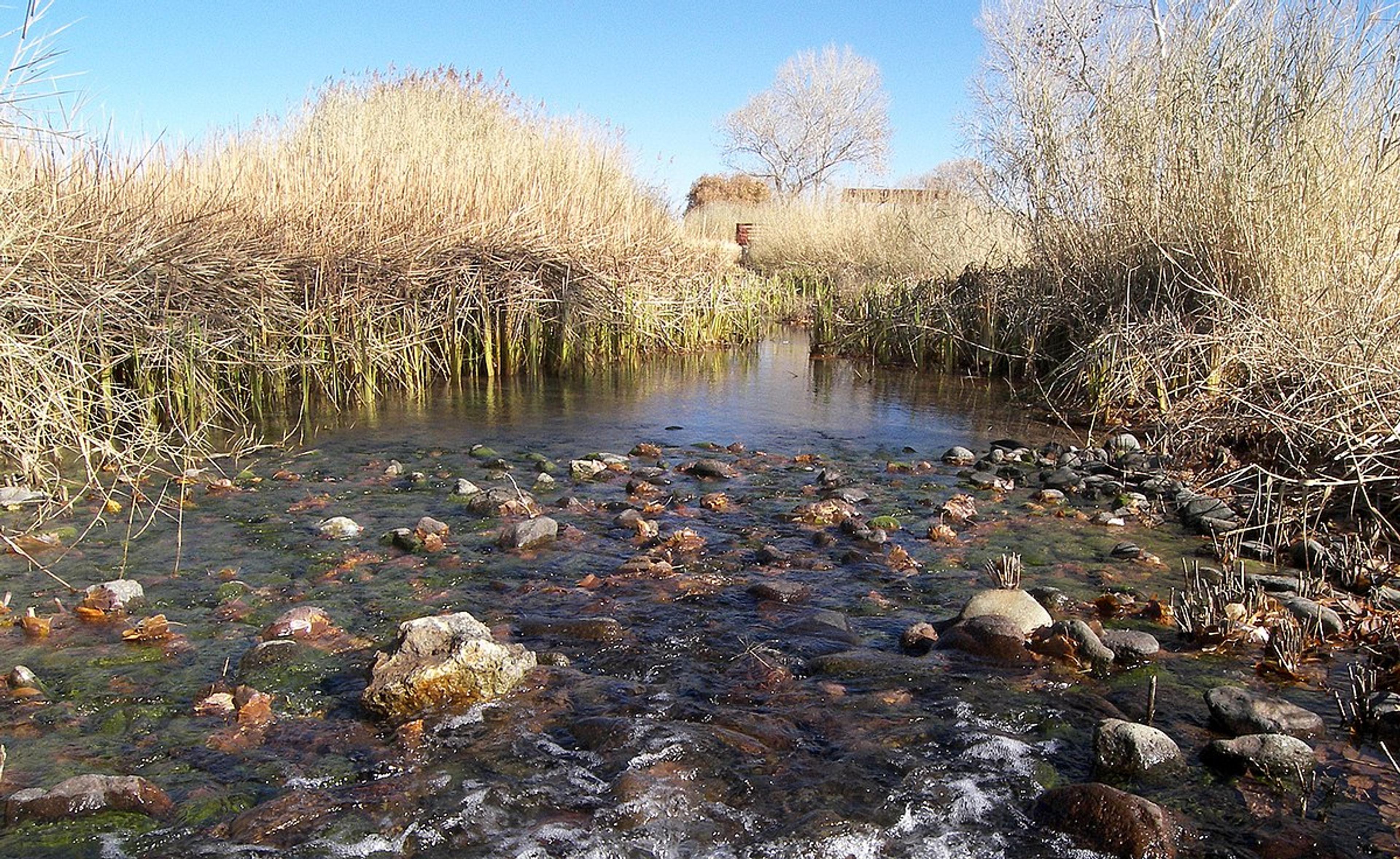
Cienegas at Pitchfork Ranch
Learning about this history, the Cole’s set out to restore the cienega. The first step was figuring out how to slow the water down. Their solution involved creating more than 250 earthen grade control structures, like weirs, all along the streambed. When the water hits these structures– it slows down, and both sediment and seeds sink to the bottom. This simultaneously starts to fill in the gully with soil, and plants the seeds, creating a virtuous cycle, as more plants slows the water even more, which means more sediment, more plants, and a shallower and shallower stream.
Building grade structures is one of the most straightforward and affordable ways to undo a gully. With enough obstacles in its path water will slowly do the work of building up its own creek bed, repairing the channel it gouged out and in the process, stretching life-giving moisture across the desert. Between two and five feet of gully has been filled in on the Pitchfork so far, and the Cole’s have done this work with a combination handmade, machined, and even natural structures. A single boulder, for example, has captured 1,037 tons of sediment over the last 20 years.
A.T. Cole: I think the Apache term for this country translated to horizontal yellow. And that’s because it was predominantly yellow grassland and it wasn’t incised like it is now. And so it was much more horizontal. And so horizontal yellow is what we’re going toward. And we think of it in terms of shallowing the landscape.
SM: Both gullies, and the artificial gully we discussed in part one– field tile are strategies for deepening the landscape, for moving land to change the way that water flows in the hopes of making it better for farming. The problem of course, in both cases, is that water that’s flowing over land is never just water. It carries soil and nutrients away with it. The Cole’s efforts on the Pitchfork Ranch are aimed at turning this interaction on its head. They want to hold every drop of water they possibly can in the land for as long as they can, and in doing so, helping the land reabsorb all the moisture, nutrients, and life that the water holds.
A.T. takes comfort in the fact that the work that he and Lucinda are doing on the ranch is not only increasing the local land’s resiliency in the face of climate issues, it’s also contributing, at least in a small way, to climate mitigation. After all, research has shown that wetlands, including cienegas, tend to be dense carbon sinks in the landscapes, capable of storing fifty times more carbon than, say, farm fields or even grasslands or forest.
They also provide important cool spaces in hot regions, and provide critical environments for many vulnerable species. And the Coles see the outcomes of this work all the time, with their own eyes.
A.T. Cole: It’s almost a false appearance sometimes. Sometimes it looks like Eden. This is the Sonoran Desert. But there are parts of it that look like Virginia in the spring. we’ve videoed a herd of 50 deer on this ranch, 50. It was huge. And, the elk have arrived. We didn’t have elk here when we first came here. Just yesterday we saw Four Fox in front of the headquarters here. And we’ve had a coati, a troop of kudamundi.
SM: In case you, like me, are not familiar with Southwestern mammals, a kudamundi or a coati is also called the mexican raccoon, though they have slimmer bodies and longer tails and snouts than their raccoon cousins. These critters are rare in the U.S., and they’re pretty severely threatened by habitat loss, especially related to urbanization, deforestation, and agriculture.
[MUSICAL INTERLUDE]
SM: I think it’s safe to say that the work being done on the Pitchfork Ranch is, in the truest sense, regenerating the ecosystem that once occupied its landscape. But the sharp-eared listener might have noticed that, though the Coles may be realizing the promise of restoration efforts, we haven’t talked about the “agriculture” half of the “regenerative agriculture” equation here.
Today, A.T. does raise cattle on the Pitchfork Ranch, but he has mixed feelings about it. Throughout his decades of doing restoration work, he’s not seen evidence that cattle are good collaborators in regeneration efforts, though he does think they have some kind of place on the landscape.
A.T. Cole: So our cattle are not here as a restoration tool. Our cattle are here because we want to have the agricultural tax benefit. And you’ve probably heard the term that the tax benefit is substantial. Well, I had no idea, but substantial means over 400 times. It’s shocking, but what’s going to happen to this land? You can build houses, you could have McMansions here, you could have subdivisions here, but what else can you do on this habitat? I can tell you that my spouse doesn’t agree with that. She thinks that there shouldn’t be any cows out here. And there are lots of people who think there shouldn’t be any cows, period.
[MUSICAL INTERLUDE]
SM: The Coles’ experience on the Pitchfork is just a single anecdote, and many others, across the U.S. and around the world, have presented evidence that appropriate grazing and cropping can help make nearby human and wild ecosystems more healthy and stable.
But when it comes to answering our question, about the role of regenerative agriculture in repairing gullied landscapes, I think the Coles’ experience is particularly apt. After all, the southwestern U.S. may well be a more severely gullied landscape than the Georgia Piedmont, and unlike in the Southeast; overgrazing cattle, overharvesting timber, and generally overtaxing the land has unquestionably led to the Southwest’s current state.
To me, the answer is clear– the Cole’s success thus far wasn’t won by bringing more cattle into their cienega, a place where cattle will tend to loaf, wallow, and generally cause more pollution and destruction. Instead these victories were won by intervening in a way that accentuated natural processes, which in turn attracted wild animals to participate in the work of restoration, rather than familiar barnyard critters. I think the experience on the Pitchfork suggests that activities that truly restore or regenerate are often separate from, or even opposite to, agriculture.
And there’s something sensible about that conclusion– after all, agriculture is inherently extractive. Our food, fiber, and fuel are taken from one set of landscapes to be consumed elsewhere. It is very hard to regenerate a landscape when you are systematically removing some of its constituents, often replacing them with new inputs extracted from some other landscape somewhere else. Nothing comes from nothing, not even when you’re doing regenerative agriculture.
In other words, it seems to me that regen ag is really to be just another type of conservationism, dressed up in a sort of hyper-preservationist costume. Perhaps the lesson here is that, if a solution seems too easy and too perfect, it just might be.
CONCLUSION
SM: If regenerative agriculture is just another flavor of conservationism, then we’re back at square one, trying to decide whether we should conserve the landscapes around us for our use, or whether our obligation is to protect wilderness from the most destructive species on earth, humans.
Given the current political environment, conservationists currently have the upper hand, though in truth both sides of the environmental world are being excluded as questions about environmental protection and resource conservation take a backseat to economic and political expediency.
Pressures are extreme today, but not necessarily unprecedented, as many national environmental organizations have, in recent decades, already tilted their priorities away from their most radical preservation goals and towards those that are more palatable to farmers, business, and wealthy funders writ large.
This is likely why preserving farmland and protecting ecosystems are often blended together in environmental messaging as if they are a single activity. Perhaps the intent of creating the false equivalency is to indicate that farmland is better for wild plants and animals than, say, a housing development. But given everything we’ve learned across these last two episodes, about the destructive and partially agrarian forces that shaped Providence Canyon, about the correlation between Iowa ag and the state’s environmental and public health crisis, about the unintended consequences of conservation easements, and even the unhelpfulness of cattle on the Pitchfork, I think the assumption that farmland is automatically better for wildland seems questionable at best.
But of course, advocating for less farmland– or even better managed farmland, is not without consequences. More management is more expensive– it could raise food prices, an injustice to the poor. On the other hand, less farmland overall might make the farmland that’s left even more expensive and inaccessible– even further out of reach for young and beginning farmers. So then is it better to commit to higher levels of environmental mismanagement in order to have more affordable food, or to further expand agriculture’s footprint in order to ease access, even if doing so might cause more environmental problems and public cost? Which is right? Which is wrong? I genuinely don’t know.
The reality is, there are no easy answers– on farmland or in environmental policy. Every action has an equal and opposite reaction. For every good deed, a punishment. It’s trade-offs– all the way down.
[MUSICAL INTERLUDE]
There are just a couple of episodes left in this series, but one of the most crucial topics to discuss is still ahead of us. In the last 40 years, or so, the fundamental transformation that farmland has undergone, was not primarily ecological or practical, not political or cultural.
No, I’d argue that the biggest thing that’s happened to farmland in the last half century is the land’s transition from the home place to a home run financial asset. Something more valuable than gold.
Howard Halderman: the blue chip nature of it is, it provides that consistent annual cash return, and historically speaking, a 4 5 percent appreciation. So the Corn Belt is going to generate a 2 to 3 percent return today cash yield and a 4 or 5 appreciation. It’s an all in 6, 7, 8 percent returning asset and it’s like widgets coming out of a factory in that regard.
SM: How farmland became a more reliable investment than Wall Street, and how your retirement accounts farms its value— but actually, next time, on The Only Thing That Lasts.
SIGN OFF
SM: Before we sign off, I talked through information from a number of sources and experts today, so if you want to dig into it yourself, check out the shownotes, or our website for links.
While you’re there, make sure you head over to ambrook.com SLASH offrange to stay up on the latest reporting from the Offrange team on agriculture, land, and environmental issues like the ones we talk about here on the show. After you subscribe to the podcast, don’t forget to sign up for the newsletter, and follow Offrange on socials for news about upcoming projects and stories. And we can’t wait to hear what you think! If you like what we’re doing, let us know, and don’t forget to share.
The Only Thing That Lasts is now an Offrange production. This podcast is written, produced, and mixed by me, Sarah Mock. Our editor is Jesse Hirsch, with support by Ali Aas and Bijan Stephen. Technical support by Dan Schlosser, and general support by Mackenzie Burnett and the whole team at Ambrook.
A final note, Ambrook Research, the media outlet that produced this podcast, is 100% editorially independent from Ambrook, the fintech company that funds it.

